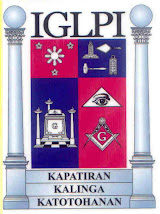DID YOU KNOW…?A Short Article…
By Bro. Ric M. Alvarez
That the first Masonic Lodge in the Philippines was La Primera Luz Filipina constituted in Cavite in 1856 under the auspices of the Gran Oriente Lusitano by Spanish naval officers Malcampo and Mendez Nunez, and were composed mainly of officers of the Spanish Navy, Army and the bureaucrats from the Spanish colonial government?
That prominent Masons were part of the Thirteen Martyrs of Cavite of 1896, most notably Victoriano Luciano, Maximo Inocencio, Feliciano Cabuco, Eugenio Cabezas, Hugo Perez, Maximo Gregorio, Jose Lallana, Severino Lapidario and Alfonso Ocampo?
That Bagong Buhay Lodge was founded by prominent propagandists and revolutionary leaders WB Jose A. Reyes, WB Ladislao Diwa, and WB Juan N. Santos on August 11, 1907 in San Roque, Cavite?
That WB Jose A. Reyes, WB Ladislao Diwa, and WB Juan N. Santos were originally members of the Sinukuan Lodge of Tondo before they established the Bagong Buhay Lodge in Cavite?
That aside from the three founders of the Bagong Buhay Lodge, prominent members of the Sinukuan Lodge were Manuel Quezon, Rafael Palma, Quintin Paredes, Jorge Vargas, Juan Nolasco and Manuel Earnshaw?
That Bagong Buhay Lodge was one of the four Lodges formed after the constitution of the Grand Regional Lodge of the Philippines?
That the four new Lodges formed after the constitution of the Grand Regional Lodge of the Philippines were (with their old numbers) Balagtas (149); Taliba (165): Pilar (203); and Bagong Buhay (291)?
That of the four new Lodges formed after the constitution of the Grand Regional Lodge of the Philippines, only Bagong Buhay was newly established; the others were revived, reconstituted or reorganized old Lodges? In effect, Bagong Buhay was really the first new Lodge founded under the auspices of the Grand Regional Lodge?
That the other founding Lodges (and their old numbers) of the Grand Regional Lodge were Nilad (144); Walana (158); Dalisay (177); Sinukuan (272); and Mabini (290)?
That Bagong Buhay’s WB Jose A. Reyes was elected Grand Fourth Vice President of the Grand Regional Lodge of the Philippines during an assembly in 1906?
That on November 15, 1908, WB Jose Reyes took part in the first installation of officers of Silanganan Lodge No. 305 (now Lodge No. 19), presided by RW Valentin Polintan and accompanied by Bros. Pantaleon Garcia, Francisco Licuanan, Felipe Buencamino, Elias Asuncion, E. Vergara and Pascual Casimiro?
That in 1907, Bagong Buhay Lodge was referred as Lodge 291 under the Filipino-dominated Grand Regional Lodge of the Philippines?
That the Grand Regional Lodge of the Philippines was constituted in 1907 under the jurisdiction of the Gran Oriente Espanol?
That among the more prominent members of the Grand Regional Lodge of the Philippines were Apolinario Mabini, Felipe Buencamino, Ramon Diokno, Ladislao Diwa, Pantaleon Garcia, Baldomero Aguinaldo and Emilio Aguinaldo?
That the Grand Regional Lodge of the Philippines was similar to the earlier initiatives of Filipino Masons to have a separate but equal jurisdiction over its territorial lodges, when in 1894 they initiated the founding of the Grand Regional Council of the Philippines?
That from 1868 until 1917, there existed Spanish, English, German, Scottish, French, Filipino and American lodges, and that the Philippines was administered by more than one Masonic jurisdiction?
That only in 1917, that Bagong Buhay lodge was started to be referred as Lodge No. 17, under the unified Grand Lodge of the Philippine Islands (fusion of the Filipino-dominated Grand Regional Lodge of the Philippines, and the American-dominated Grand Lodge of the Philippine Islands, and other small jurisdictions) and became under the direct jurisdiction of American Masons?
That during the fusion of the Grand Lodge in 1917, Bagong Buhay Lodge listed 115 master Masons as members?
That after the union, it was originally agreed that a Filipino Grand Master alternates with an American Grand Master in heading the unified Grand Lodge?
That in 1918, Manuel Quezon became the first Filipino Grand Master of the Grand Lodge of the Philippine Islands, but only next to William H. Taylor, the American Grand Master who became the first GM of the unified Grand Lodge in 1917?
That in 1920, Rafael Palma became the second Filipino Grand Master of the GLPI, the fourth to hold such a position under the alternating scheme?
That the union of the two Grand Lodges to form the Grand Lodge of the Philippine Islands came at a price for the Filipino Masons? All the Grand officers of the Grand Regional Lodge lost their positions; the rituals and ceremonies were abandoned and supplanted by American oriented rituals; the laws and statutes governing members and the lodges were replaced by the GLPI; and the Lodges of Filipinos were physically redecorated?
Sources / References:Kalaw, Teodoro. Philippine Masonry: Its Origins, Development and Vicissitudes up to the Present Time 1920. Translated by Frederic Stevens. Manila: McCullogh Printing, 1955


 “Condenado” The re-enactment of the execution of the Thirteen Martyrs of Cavite City
“Condenado” The re-enactment of the execution of the Thirteen Martyrs of Cavite City


 Bagong Buhay Lodge No. 4 “Cavite City Hall of Fame” first recipient of The Order of the XIII Martyrs with MW Jim Bantolo GM, VW Ric Alvarez AGS, VW Bert Esperat GBB, WM Ric Marmolejo, Bro. Meng Miranda, Bro. Gerry Agbunag, Bro. Larry Crawford, Bro. Mike Herradura, Bro. Bong Domingo & Bro. Ronald Aikman
Bagong Buhay Lodge No. 4 “Cavite City Hall of Fame” first recipient of The Order of the XIII Martyrs with MW Jim Bantolo GM, VW Ric Alvarez AGS, VW Bert Esperat GBB, WM Ric Marmolejo, Bro. Meng Miranda, Bro. Gerry Agbunag, Bro. Larry Crawford, Bro. Mike Herradura, Bro. Bong Domingo & Bro. Ronald Aikman




